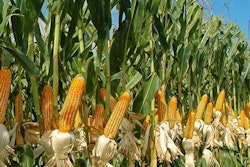
Reuters June WASDE Estimates Show Conservative Corn Numbers
Reuters released their June WASDE estimates on Wednesday, June 5.
- Old crop corn: carry-out estimated +28 MBU to 2.123 BBU from May. We believe that the USDA will lower export demand.
- New crop corn: carry-out estimated to decline by 568 MBU to 1.917 MBU. At FBN we think that adjustments will be made to the demand and supply sides.
- New crop corn yield: -3.6 BPA to 172.4
- New crop corn production: -779 MBU to 14.251 BBU
- Old crop soybeans: carry-out +9 MBU to 1.004 BBU from the May report. We believe small adjustment made to exports.
- New crop soybeans: carry-out +13 MBU to 983 MBU. We think that both the supply and the demand side will be adjusted.
- New crop soybean yield: -.5 BPA to 49.0
- New crop soybean production: -27 MBU to 4.123 BBU
- Wheat: all-wheat carry-out -23 MBU to 1.118 BBU. We feel that a reduction in production and increase in exports will occur
- *USDA presents by-class estimates in the July WASDE
- All wheat production: -14 MBU to 1.883 BBU
- HRW production: -25 MBU to 765 MBU
- SRW production: -4 MBU to 265 MBU
What It Means for the U.S. Farmer: At FBN we believe that the estimated new crop corn presents a developing bullish supply and demand scenario while the growing old crop carry-out is bearish. We think that the wheat and soybean estimates are “interesting” and demand further scrutiny. In particular, we believe that the estimates for old crop/new crop soybeans and wheat are bearish/neutral.
China Finds Armyworms in 18 Provinces
Fall armyworms have spread to 18 of China's provinces, regions and municipalities since it was first detected in the southwestern province of Yunnan in early January.
The fall armyworm has the capability to severely threaten China’s agriculture and grain production security of China.
Fall armyworms, which feast in large numbers on the leaves and stems of many plant species, including sorghum, corn and sugarcane, can infest and damage hundreds of hectares of crops overnight. The pest was expected to reach the country's northeastern corn-belt by this month or July.
The pest has been found in at least 92,000 hectares of farmland in China, mostly in corn and some sugarcane crops.
China had about 130 million hectares of arable land as of the end of 2017 and grows corn on about 42 million hectares.
What It Means for the U.S. Farmer: At FBN we believe two things: 1. The proliferation of armyworms in China’s corn crop is a clear threat to their corn supplies. 2. China has a proven history of underreporting to the world market the extent of negative production and supply impacts of agriculture commodities that are deemed nationally sensitive. Given the lack of information, we believe that if China is unable to contain armyworms in key corn growing regions could force the country to start importing.
The risk of trading futures, hedging, and speculating can be substantial. FBN BR LLC (NFA ID: 0508695)















